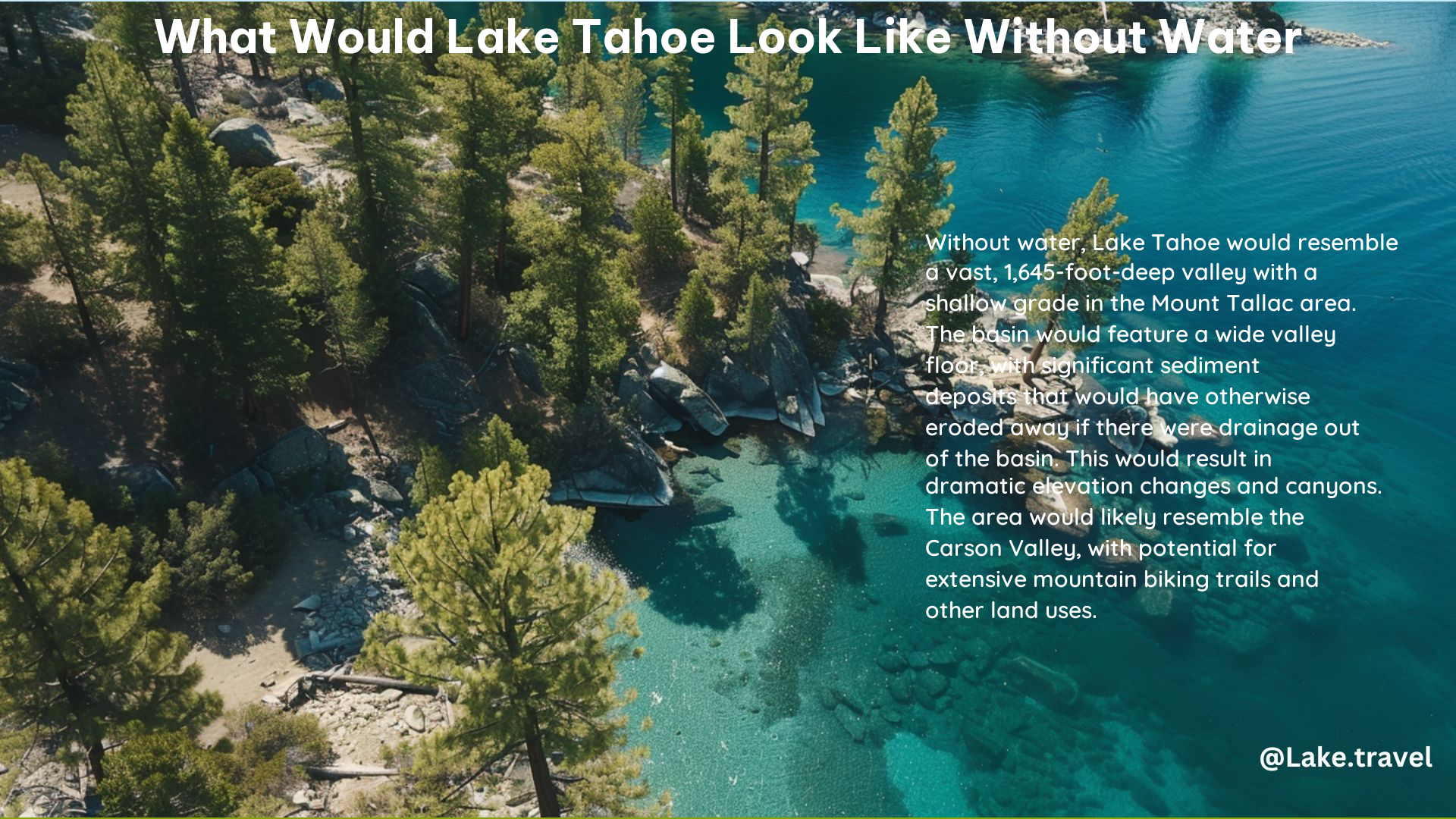If Lake Tahoe were drained of its water, the region would undergo significant changes in its topography and geographical features. From the exposed valley floor to the hidden landmarks, the absence of water would reveal a unique and captivating landscape.
The Exposed Valley Floor
The lake’s basin would reveal a wide valley floor with a shallow grade, unlike the abrupt relief found in the Owens Valley area. This is evident from the USGS map, which shows the lake’s depth and surrounding terrain. The exposed sediment and rock formations would create a stark contrast to the current shoreline, offering a glimpse into the region’s geological history.
Sediment and Erosion

The lake’s basin has accumulated a significant amount of sediment over time, which would be exposed if the water were removed. This sediment would have otherwise eroded away if there were drainage out of the basin, leading to dramatic elevation changes and the formation of canyons. The exposed terrain would provide valuable insights into the region’s environmental conditions and past climate patterns.
Drainage and Rivers
Lake Tahoe drains through the Truckee River, which would continue to flow through the valley even if the lake were drained. This river would likely carve out a new path through the exposed sediment and rock formations, creating a dynamic and ever-changing landscape.
Hidden Landmarks and Features
The absence of water would reveal hidden features such as underwater forests, which have been exposed during past droughts when the lake levels dropped significantly. These forests provide valuable insights into the region’s history and environmental conditions, offering a unique opportunity for scientific research and exploration.
Potential Uses
Some have suggested that the drained lake bed could be used for large-scale events or even as a site for affordable housing, although these ideas are purely speculative and not currently feasible. The exposed terrain would offer unique opportunities for outdoor activities like mountain biking, with the potential for creating extensive trails and routes through the newly revealed landscape.
Comparison to Other Regions
The drained lake bed might resemble the Carson Valley, which is located nearby and shares similar geological characteristics. This comparison can provide valuable insights into the potential changes and challenges that would arise in the absence of Lake Tahoe’s water.
Environmental Impact
The removal of water would have significant environmental implications, including the loss of habitats for aquatic life and the disruption of nutrient cycles. The lake’s mixing process, which occurs every four to five years, plays a crucial role in maintaining oxygen levels and water clarity, and its absence would have long-term effects on the ecosystem. Careful consideration and conservation efforts would be necessary to mitigate the environmental impact of a drained Lake Tahoe.
In conclusion, a drained Lake Tahoe would reveal a vast, sediment-filled valley with a shallow grade, exposing hidden features and offering new opportunities for outdoor activities. However, the environmental consequences of such a scenario would be significant and would require extensive management and conservation efforts to maintain the region’s ecological balance.
Reference:
– USGS Map of Lake Tahoe
– Underwater Forests in Lake Tahoe
– Carson Valley Geological Characteristics
